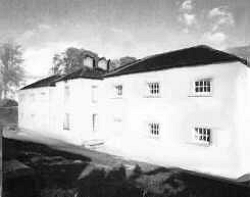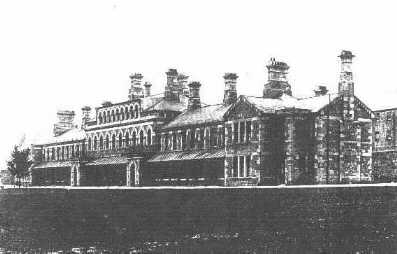





CONFLICTS IN IRELAND
The Fame of Tipperary Group present...
 |
 |
 |
 |
 |
 |
CONFLICTS IN IRELAND |
|||||
| THE FENIAN RISING 1867 | |||||
The Irish Republican Brotherhood (IRB) began in 1858 as a secret, oath-bound organisation whose avowed aim was to establish an Irish Republic by force in 1858. A similar organisation was founded in America. They were founded respectively by former Young Irelanders James Stephens and John O'Mahony.
Stephens had been wounded in the Rising in Ballinagarry, County Tipperary but had later escaped to Paris where he had met O'Mahony. The American sister organisation was called The Fenians, after the warrior-heroes of Irish mythology. This name was soon used for both organisations.
The Fenians in Ireland spread throughout the south and south-east of the country, with promises of money for arms to arrive from America, but little arrived. Constitutional nationalists and the Roman Catholic Church felt a bitter opposition opposed the Fenian movement, remembered in the words of one bishop:
" Hell is not hot enough nor long
enough to roast the Fenians".
In 1863, Stephens founded the newspaper The Irish
People which promoted Fenian ideals
and helped to attract new recruits. By 1865, there were
approximately 80,000 men in the Fenians in Ireland and Britain
while the American Civil war had given arms training to thousands
of Irish-American Fenians. However, the American movement was
badly split and only 150 soldiers came to Ireland to help with
training of men. A Rising was planned for 1865, but plans were
foiled by the British authorities when Stephens was captured, by
the suppression of its newspaper and by the arrests of other
prominent Fenians. These factors and the many postponements to
call the beginning of the Rising in 1866 or 1867 led to the
break-up of the movement.
In February 1867, a small local rising took place in Cahirciveen, Co. Kerry. Finally, the long-awaited national Fenian Rising took place in 6 March 1867, after yet other delays. Thousands of Fenians took to the hills in counties Tipperary, Dublin, Limerick and Cork but were mostly unarmed and easily beaten. Hundreds of men were arrested and sentenced to long prison terms, including Thomas Clarke, one of the signatories of the 1916 Declaration.
THE TIPPERARY CONNECTION
Thomas Doherty Brohan was one of the main contributors to the Fenian newspaper, the Irish People. His material was published under the name "Harvey Birch" and he resided in Tipperary Town. In March 1866, he was arrested and imprisoned in Dublin for eight months. Other prominent Fenians in County Tipperary included Michael O'Neill-Fogarty from Kilfeacle who was also arrested in March 1866, and released two months later.
The Fenian Rising in Tipperary took place at Ballyhurst townland, on the main Cashel-Tipperary road. On the night of the 5 March 1867, the railway line at Longford Bridge was destroyed and several bands of Fenians raided the houses of the gentry (such as Massey of Grantstown) for arms. The RIC police barracks at nearby Emly and Gortavoher were also attacked, but the police in both instances managed to repel the attackers. On Wednesday, the 6 March 1867, over a hundred and fifty men, armed with pikes, assembled at a fort at Ballyhurst including Michael O'Neill-Fogarty. They were led by American Civil War veteran Colonel Thomas F. Bourke, a native of Fethard, who had been seriously wounded at the Battle of Gettysberg. He had returned to Ireland at the end of 1866, to assist the proposed Rising. A brief conflict between the Fenians and sixty men of the 31st Regiment under Magistrate de Gueron wounded many, caused others to flee. One Fenian called Patrick Russell was killed and is buried in Lattin cemetery, a village five miles away.
Burke and forty men were captured and held in the Tipperary Town Bridewell Gaol for a week before being sent to Clonmel for trial.

Bridewell Gaol, Tipperary Town
Burke was sentenced to death for his part in the Rising in April. This was later commuted to life imprisonment on the intervention of the President of the United States and the Irish Cardinal Cullen of Dublin. However, he was released in 1871, returning to the United States where he died in 1889. The other local Fenian leaders were tried in the following July Assizes.
Another consequence of the Fenian Rising was
the decision to build a large Military
Barracks in Tipperary Town in 1874. Troops had always
been stationed in the town due to the continued agrarian
agitation in the area but had been housed in a variety of
temporary accommodation. Work began on the Barracks in 1874 at a
cost of £25,000.

Part of the Tipperary Town Military Barracks
Text © May 2001 Noreen Higgins
| Click on the map image to return to the IRELAND Index |